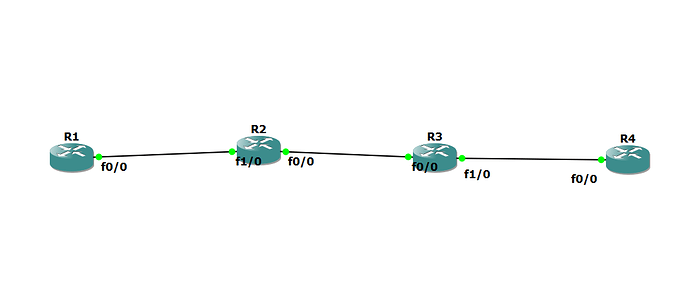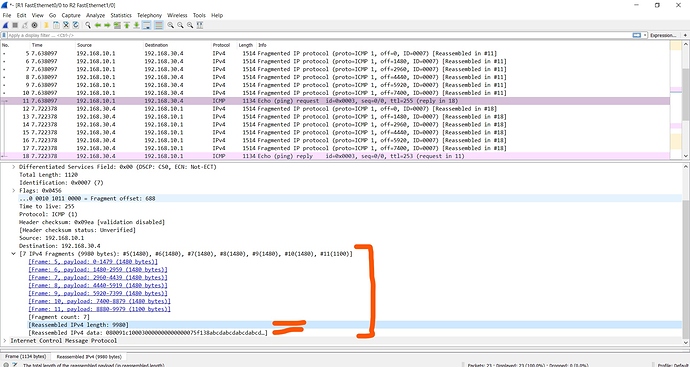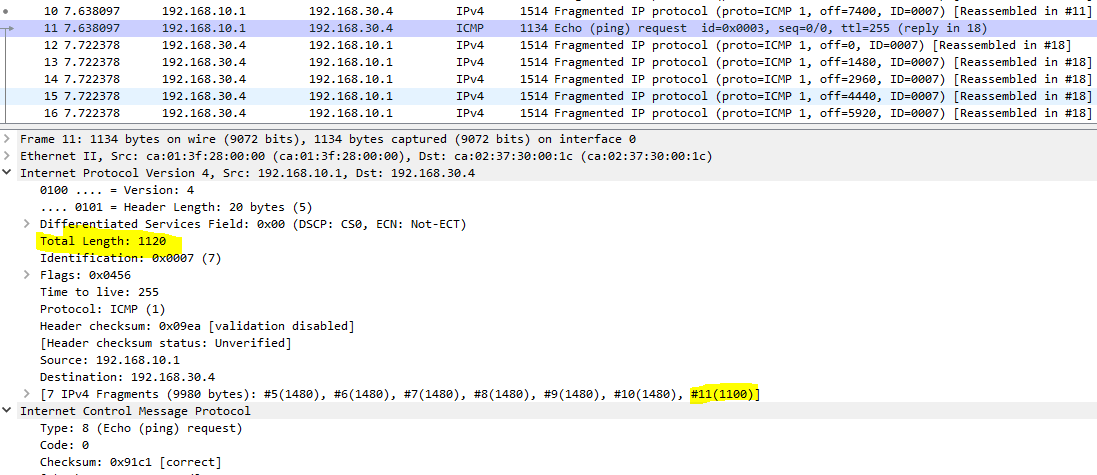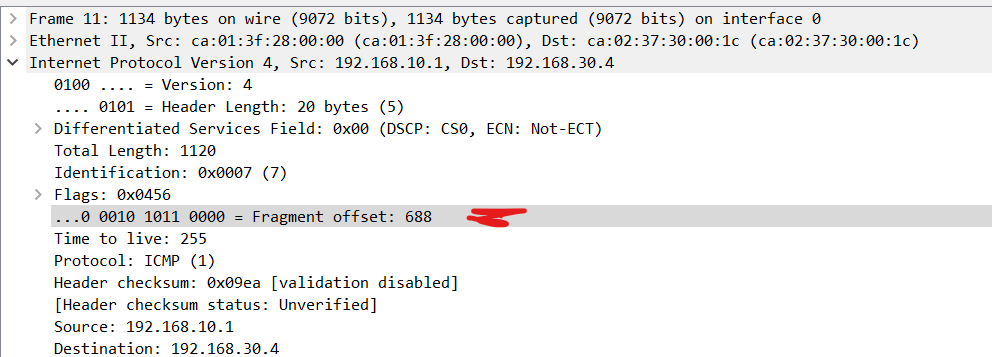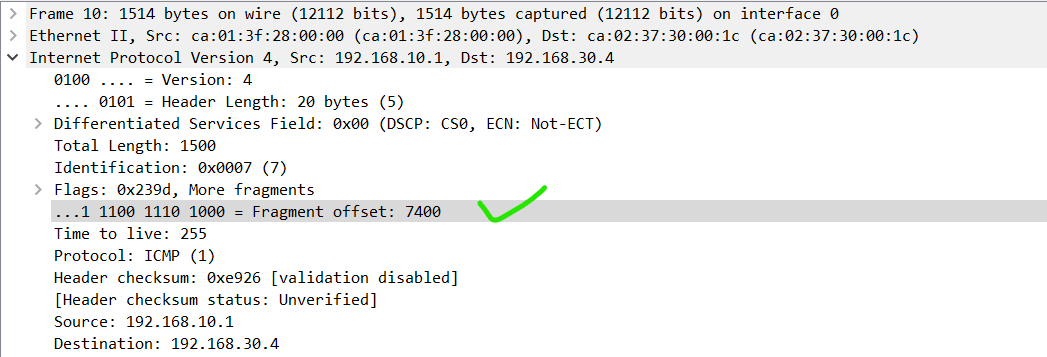Hello John
I think the important thing here to note is that all of the MTU configs affect encapsulation. So if there is a segment with a size larger than the IP MTU, then that segment will be fragmented into multiple IP packets during encapsulation from L4 to L3. This would actually occur at the host that is sending the data. (routers do not de-encapsulate PDUs to layer 4 unless they are functioning as deep inspection firewalls, but I digress).
If a packet comes in to a router and is deencapsulated, its destination IP address is checked, and the exit interface is determined, then the packet will be reencapsulated from L3 to L2. It is at this point that the IP MTU and the Interface MTU are examined. If the interface MTU is too small for the size of the packet, it will be fragmented and encapsulated into two frames unless the DF bit is set. I don’t know of any other scenario in which fragmentation will not occur when the DF bit is not set.
I hope this has been helpful!
Laz


